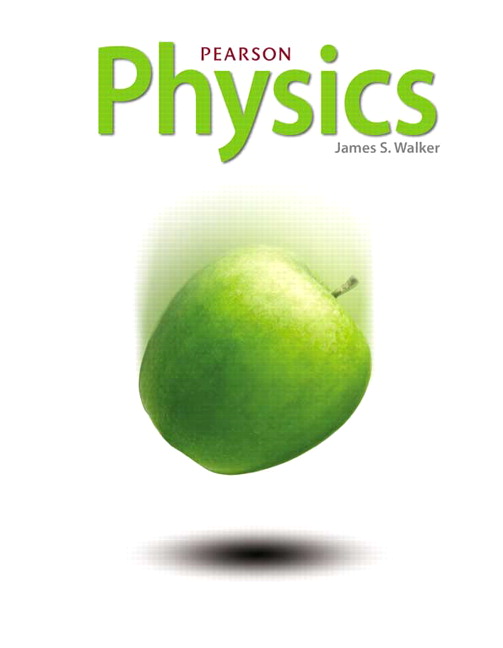
All Solutions
Page 519: Lesson Check
Our perception of sound is such that doubling the loudness corresponds to increasing the intensity by a factor of 10, which corresponds to an increase of $10text{ dB}$.
Keeping that in mind, a difference of $20text{ dB}$ will produce a doubling effect of the loudness twice. This means that the louder alarm will seem 4 times louder.
The amount of energy carried by a sound wave through a given area in a given time is the intensity $I$. It can be calculated via power $P$ and area $A$ as follows:
$$
begin{equation}
I = frac{P}{A}
end{equation}
$$
We know that the intensity of the sound wave is $I = 4.4 cdot 10^{-4} ; frac{text{W}}{text{m}^2}$. And the area through which it passes is $A = 1.8text{ m}^2$
Finding the power of the sound source is done simply, using formula (1) as follows:
$$
begin{align*}
I = frac{P}{A}
end{align*}
$$
Rearranging for $P$ :
$$
begin{align*}
P = I cdot A
end{align*}
$$
Plugging in the values we get:
$$
begin{align*}
P = 4.4 cdot 10^{-4} ; frac{text{W}}{text{m}^2} cdot 1.8text{ m}^2 approx 7.9 cdot 10^{-4}text{ W}
end{align*}
$$
The amount of energy carried by a sound wave through a given area in a given time is the intensity $I$. It can be calculated via power $P$ and area $A$ as follows:
$$
begin{align*}
I = frac{P}{A}
end{align*}
$$
For spherical wave expansion the area becomes:
$$
begin{align*}
A = 4 , r^2 , pi
end{align*}
$$
So we get finally:
$$
begin{equation}
I = frac{P}{4 , r^2 , pi}
end{equation}
$$
Where $r$ is the distance from the sound source to the wave front.
We know the power of the sound source is $P = 25text{ W}$, and the distance from the point to the source is $r = 5.1text{ m}$.
Now using formula (1) we find the intensity as follows:
$$
begin{align*}
I = frac{P}{4 , r^2 , pi}
end{align*}
$$
Plugging in the values we get:
$$
begin{align*}
I = frac{25text{ W}}{4 , (5.1text{ m})^2 , pi} approx 0.077 ; frac{text{W}}{text{m}^2}
end{align*}
$$
100 violins will have 100 times the power of 1 violin.
Therefore, a single violin produced 20 dB quitter than 100 violins.
The difference in intensity level is
$$
difference=76 ;dB-20;dB=56;dB
$$
Haven't found what you were looking for?
Search for samples, answers to your questions and flashcards

